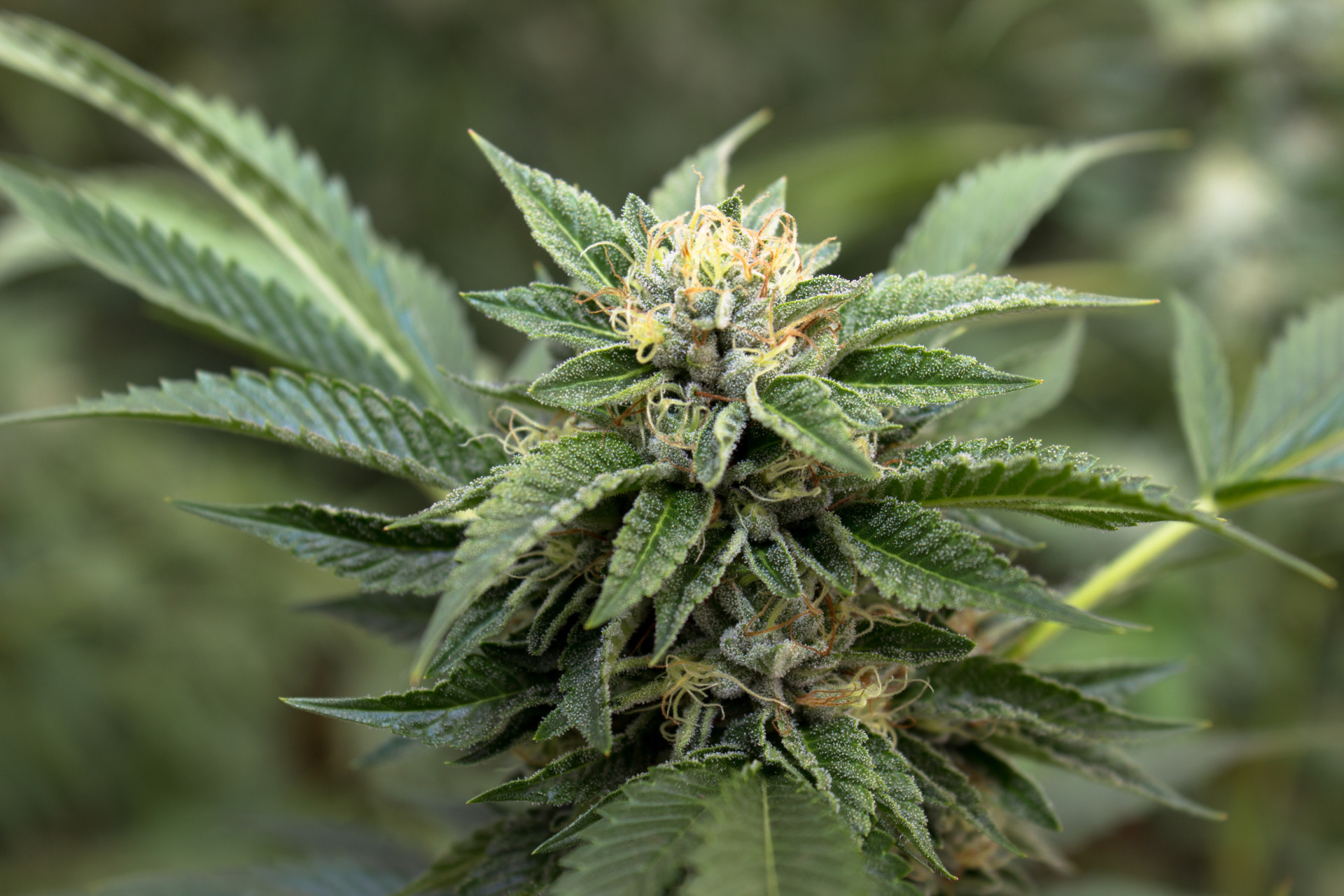Considering homegrown cannabis? Before you head to the store for supplies, it’s worth some research to learn more. Read on for our beginner’s guide to growing marijuana at home.
You may have heard someone say that cannabis is just a weed. Technically, this is true—cannabis grows wild all over the country. But cultivating a high-yield, healthy marijuana plant requires persistence and education. Now that it’s legal to grow cannabis for personal use in certain states, let’s explore how to get started growing marijuana at home and how to troubleshoot issues with your harvest.
Is it Legal to Grow Marijuana in My Backyard?
First things first: Certain states and counties may not approve or may limit backyard marijuana gardening. Check the rules for your city to see if you can legally grow cannabis plants on your property. Also, be sure to find out whether you can grow indoors or outdoors, as these rules vary from city to city.
What to do Before You Plant Cannabis
Go to Cannabis School
Ed Rosenthal and Jorge Cervantes are two respected leaders in the cannabis cultivation world. Their books, workshops and lectures have educated millions of people on cannabis cultivation. If you’re looking for a place to start, look no further than Ed and Jorge.
Believe it or not, you may also be able to find online or in-person workshops in your community, depending on where you live. You can also do your homework before you plant by visiting a trusted grow shop to pick up some tips and tricks.
When it Comes to Cannabis Plants, Girls Rule
Are you planting seeds given to you by a friend? Make sure you learn the difference between male and female marijuana plants. Master gardeners use male plants for breeding, but for beginning cannabis gardeners, male plants aren’t that useful. This is because male plants don’t produce buds and will pollinate your female plants, resulting in an inferior, seedy crop.
To avoid growing the wrong kind of plant, buy seeds from a reputable cannabis company. Or, to eliminate the possibility of growing male plants, purchase live clones (baby marijuana plants) from your dispensary. But before you even get to that point, it’s a good idea to learn as much about cannabis plant anatomy as you can.
Choose the Right Container Size for Your Cannabis
Cannabis plants grow so quickly that by harvest time, an outdoor plant’s root ball can fill a 400-gallon pot. Choose strains suited for your environment, whether indoors or outdoors, and plant them in the largest pot possible.
Good Soil Grows Good Plants
One place you certainly don’t want to cut corners is with soil. This isn’t the time for cheap, questionably sourced soil from a discount store. Buy high-quality bagged soil, or ask your grow shop about reputable soil companies. Talk to local farmers (visit a farmer’s market and you’ll have your pick!) about making compost tea and building a soil food web, which helps your plant’s roots access all of the nutrients they need.
What to Watch Out for While Your Marijuana Grows
Adjusting Your pH Doesn’t Take a Ph.D.
Checking the pH of their water and soil is one of the first things farmers do when starting new plants. Cannabis thrives in slightly acidic soil, in the vicinity of 5.5 to 6.8. Cannabis growing in unfavorable pH environments can become incapable of up-taking essential nutrients. Keeping an optimum pH is simple and affordable, and is critical to the health of your marijuana plants.
How Much Should I Water My Cannabis Plant?
When planting your cannabis, make sure you’ve provided adequate drainage. Leave the crown of the plant slightly higher than the soil, even if tiny roots are exposed. Under-watered plants look droopy, with leaves hanging by their stems.
Conversely, waterlogged roots are a vector for rot and disease. If the soil feels soggy, let it dry out before watering again. If your plant is in a small pot, tip it sideways and smell the root area. If it smells rotten, you’re probably overwatering, and you may have issues.
What Do I Feed My Marijuana Plant?
The rows upon rows of expensive, unfamiliar products in a grow shop can overwhelm novice gardeners. Do you really need all of these products? Probably not, especially if you’re using healthy garden soil. Indoor farmers are more dependent on nutrients, but a few tips will help simplify nutrient questions.
Nitrogen (N), phosphorus (P) and potassium (K) are the building blocks for plant growth. When you visit any grow shop or traditional garden store, notice the three numbers on nutrient packages. These numbers are the product’s NPK ratios. Through the leafing cycle, cannabis needs nutrients containing an equal NPK ratio. These “grow” products usually have a 20-20-20 ratio. During flowering, more phosphorus is needed, thus “bloom” products are often formulated in 10-30-10 ratios.
Cannabis also requires calcium, sulfur and magnesium, along with smaller amounts of trace minerals including copper, zinc, iron and more, all of which are usually found in soil blends and nutrients.
Measure Once and Measure Again
Cannabis plants are voracious feeders. They need nutrients to push their energy into the production of heavy, beautiful buds. Whether you’re building garden soil or working hydroponically, feeding is essential—and feeding missteps can be costly. Every cannabis farmer will tell you about that time they improperly measured their plant food and burned their entire crop.
Read feeding instructions carefully. If you’re trying out a new product, talk to the manufacturer to get specific application guidelines.
Troubleshooting Your Marijuana Plants
Are leaves yellowing? Browning at the tips? Curling inwards? Showing blackened spots? Falling off prior to harvest time? Leaf problems may foreshadow nutrient issues. One of the best ways to diagnose a problem is to photograph the affected leaves and bring the photos to your grow shop, along with your feeding regimen. There are also online cannabis growing guides, which can help you narrow down possible problems.
Be Proactive About Pest Control
Many cannabis pests such as aphids, whiteflies and mites may already live in your garden. Taking a proactive approach helps avoid costly and difficult eradication methods.
To avoid issues spreading to an entire crop, many farmers treat new plants with insecticides and fungicides before planting. Be environmentally responsible and ensure your flowers will be safe to smoke by using products that are organic materials review institute (OMRI) certified. You can even release certain beneficial insects into a grow room or plant bed to help get rid of certain pests.
Get to know what pest damage on marijuana plants looks like first. Then be sure to keep your garden area clean, and sterilize your garden tools with alcohol after each use.
Is There a Fungus Among Us?
Powdery mildew, bud rot and other molds are the scourge of cannabis farmers, as mold infestations can destroy an entire crop. It takes a trained eye to spot fungus early. And once you do, you must take immediate action to prevent the spread of mold to the entire plant and its neighbors.
Powdery mildew creates patches of a fuzzy, thread-like, white powder that adheres to leaves and is relatively easy to spot.
Bud rot is harder to locate. Often, the outer, visible portions of mature buds will look perfect, but when a farmer cracks open a bud, they may discover the interior has turned into brown rot. If you want to inspect the inside of one of your buds during a suspected rot attack, break apart the bud, away from the rest of the plant (and your other plants) to prevent the pores from spreading.
Many products on the market address fungus problems. Depending on the severity of the infestation, cutting away affected leaves along with foliar spraying—applying fertilizer directly to the leaves—is one of the easiest ways to help curtail an infestation. Some farmers swear by aggressively thinning the larger leaves to open up the plant, increase air flow and eliminate excess leaves.
More Tips for Growing Marijuana at Home
- Wear garden-specific clothing and shoes so that spores and bugs aren’t spread from place to place.
- To eliminate problems before they start, pre-treat your plants with neem oil, a natural oil used as a pesticide in organic farming, or other agents before planting.
- Keep a garden diary to note when problems arose and how you dealt with them. This is also a great way to track nutrients and water so if you have to adjust amounts you know exactly where to begin adding or subtracting.
- Plant marijuana strains suited for your environment, whether you plan on growing indoors or outdoors.
- Make sure cannabis plants are receiving enough light, but not so much that they burn. If you’re concerned your plants are getting too much light, turn down the bulbs in your indoor grow or cover the plants with a shade cloth if they’re outside.
- To reduce mildew, make sure air can circulate around your plants.
- If you see a problem, don’t wait. Read your books, document with photos and seek advice at your local grow shop immediately.






